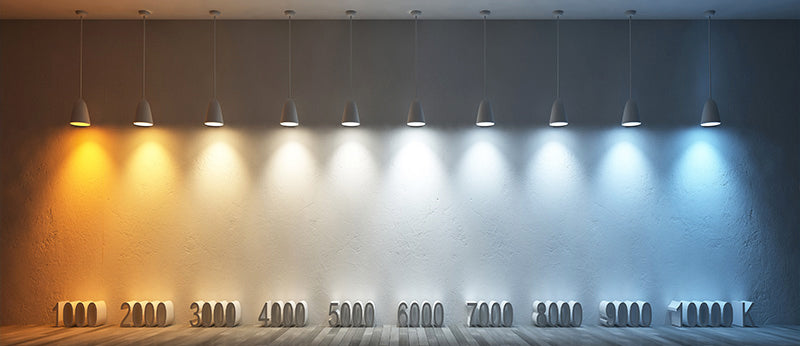Top 6 Things To Consider When Choosing Quality LEDs
1. LED Lifetime - Rated Life B50L70
LEDs are known for their long life, claims such as 50,000 hours are not uncommon. So how do we evaluate the life of an LED?
LEDs do not fail abruptly like traditional light sources. Instead they tend to slowly fade away and therefore can last a long time but produce little light. As a result, the life of an LED light source is based on the decline of the light over a period of time which is called lumen maintenance and is commonly expressed as B50L70, i.e. when 50% of a large group of identical lamps are below 70% of initial lumens.
B50 is used to describe the life of an LED which indicates no more than 50% of a sample of LEDs would be expected to have their light output drop below a target lumen maintenance level. While L70 is commonly used to evaluate the life of an LED because the human eye cannot detect a change in light output until it has been reduced by 30%.
Additionally, LED life also is impacted by electrical and thermal conditions determined by the luminaire and system design rather than the properties of the LED. The design of LED lighting enclosures plays an important role to increase the lifespan of your LEDs.
2. Colour Rendering Index, CRI 90Ra
The Color Rendering Index, CRI is a scale from 0 to 100 percent indicating how accurate a "given" light source is at rendering color when compared to a "reference" light source, such as the Sun with CRI 100. The higher the CRI, the better the color rendering ability.
In order to ensure a safe environment at work, the minimum CRI 80 is recommended in the workplace. Nevertheless, light sources whose CRI is greater than 90 display colours more distinctly and reveal the entire spectrum of colour shades can promote concentration and higher productivity.
Lighting does impact our moods and who would not want to have all the nice colors and details of our home and workplace to appear as close to real colors as possible?
3. Premium White
Premium White offers excellent light quality with a very high energy efficiency. It creates an attractive fashion retail experience requires lighting that brings out Rich Colors and Stunning Whites as well as allowing different beam angles to be used to create contrast and drama.
It’s a must-have light source for track spots in fashion stores.
4. Correlated Colour Temperature, CCT
The color of light greatly influences the environment that is created. For instance, warm white light creates a relaxing and cozy environment while cool white light improves wellbeing and productivity especially in the corporate setting.
Therefore, effective lighting design must consider the use of the adequate color temperature according to the application.
Note that CCT does not tell you anything about the color rendering ability of the LED.
5. Standard Deviation Colour Matching, SDCM
The color consistency or chromaticity consistency is measured by the Standard Deviation Colour Matching, SDCM which has the same meaning as a “MacAdam ellipse”. Chromaticity consistency refers to the product-to-product variation within a lamp or luminaire type which is important to provide uniform lighting within a room and building.
A color difference of 1 SDCM unit is not visible, 2 to 3 units is barely visible, and 4 or more units is readily noticeable. Most LEDs are binned at the four to seven step level, so you can often see color differences. Cheaper products will often use LED modules that have a range of MacAdam Ellipses beyond four, some going as high as eight.
So when an LED supplier proudly claims to offer you LEDs binned to a 4-step MacAdam ellipse tolerance (or 4xSDCM), keep in mind that this is better than LEDs that are binned to 5-steps but you will still see a colour difference over the range of LEDs supplied to that specification.
6. Colour Stability
Color properties of lighting may change, i.e. colour shift over the life and has gained more prominence with LED lighting due to its long operating life of 10 years or more in many applications. Color stability also known as chromaticity stability describes the ability of a light source to maintain its color properties over time.
Color shift in lighting is particularly important in installations where good colour performance over time is essential, such as in art galleries, wall washing and healthcare facilities where accurate assessment of skin tones is so important.
The color appearance of the LEDs changed after a period of use are caused by several possible reasons as following:
- The LEDs are being overrun by the use of an inappropriate driver.
- The application temperature is different from the operating temperature noted in the LED datasheet.
- There may be heat build-up due to improper thermal management.
- The phosphor may have degraded due to overheating or other reasons.







